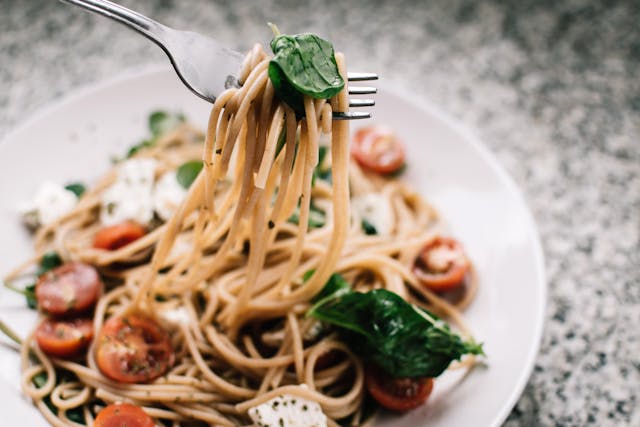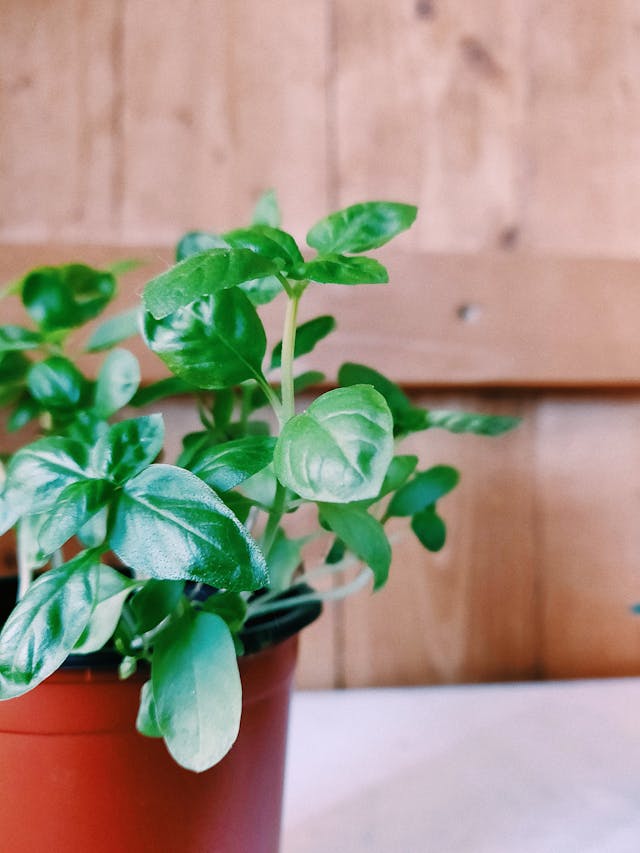Basil, often hailed as the “king of herbs,” is more than just a flavourful addition to your favourite dishes. With its vibrant green leaves and aromatic scent, basil is a powerhouse of health benefits, a breeze to grow, and a culinary treasure with a rich history. Whether you’re an aspiring gardener or a seasoned chef, basil is an herb that deserves a spot in your home.
The Health Benefits of Basil
Basil is packed with physical and mental health benefits, making it a go-to herb for those looking to improve their well-being naturally. Physically, basil is rich in essential oils like eugenol, which has anti-inflammatory properties that can help soothe joint pain and reduce inflammation. It’s also high in antioxidants, particularly in varieties like holy basil (Tulsi), which helps combat oxidative stress and supports a healthy immune system. Basil’s ability to regulate blood sugar levels makes it a valuable ally for people managing diabetes. The herb is also known for its antibacterial properties, helping to fight infections and boost overall health.
Mentally, basil has been used for centuries as a natural remedy to reduce stress and anxiety. The aroma of basil alone can have a calming effect, promoting relaxation and mental clarity. In traditional Ayurvedic medicine, holy basil is revered as an adaptogen—a natural substance that helps the body adapt to stress and maintain balance. Sipping on basil tea or simply inhaling its fragrance can help alleviate feelings of anxiety and improve your mood.

Growing Basil: A Gardener’s Delight
One of the best things about basil is how easy it is to grow. Whether you have a sprawling garden or just a sunny windowsill, basil can thrive with minimal effort. Basil prefers warm, sunny conditions, thriving best in temperatures between 70 and 90 degrees Fahrenheit. It loves well-drained soil that’s rich in organic matter, and regular watering will keep it lush and productive. Basil is a fast-growing plant, and with a bit of care, you can enjoy multiple harvests throughout the growing season.
Starting basil from seeds is simple, or you can purchase young plants from a nursery. Place your basil in a spot that gets plenty of sunlight—at least six hours a day—and pinch off the tops regularly to encourage bushier growth and prevent it from flowering too early. Even if you don’t have a green thumb, basil is forgiving and will reward you with an abundant harvest of fresh leaves.
The Taste of Basil and How to Use It
Basil’s flavor is unmistakable: a sweet, slightly peppery taste with a hint of mint and anise. This complex flavor profile makes it incredibly versatile in the kitchen. Fresh basil leaves are a staple in Mediterranean cuisine, particularly in Italian dishes like pesto, Caprese salad, and pasta sauces. The herb pairs beautifully with tomatoes, garlic, and olive oil, enhancing the natural flavors of these ingredients.
To use basil, simply tear or chop the fresh leaves and add them to your dishes towards the end of cooking to preserve their flavor. Basil is also excellent when used to infuse oils, vinegar, or even cocktails for a fragrant twist. Don’t forget about dried basil, which, while milder than fresh, still adds a wonderful depth of flavor to soups, stews, and marinades.

Basil’s Culinary and Historical Significance
Basil’s culinary history is as rich as its flavor. It has been used for thousands of years, not just as a food ingredient but also as a symbol of love, protection, and health. In ancient Egypt, basil was placed in tombs as a passport for the dead in their journey to the afterlife. In India, holy basil (Tulsi) is considered a sacred plant, often grown around temples and homes for its spiritual and medicinal properties.
The ancient Greeks and Romans also revered basil, associating it with love and fertility. They believed that basil could only grow if it was sown with curses and loud yelling, a testament to the herb’s tenacity. This belief aside, basil was commonly used in various culinary applications, from flavoring wines to being part of elaborate feasts.
Today, basil remains an integral part of global cuisines, from Italian and Thai to Indian and Middle Eastern. It’s hard to imagine a Caprese salad without fresh basil or a bowl of Thai green curry without its distinct aroma. Whether you’re whipping up a quick pasta dish, brewing a calming tea, or crafting a flavorful sauce, basil adds a burst of freshness that elevates any recipe.
Embrace Basil in Your Life
Incorporating basil into your daily routine is not just a culinary decision but a lifestyle choice that benefits your health and well-being. Its ease of growth makes it accessible to everyone, and its numerous uses in the kitchen and medicine cabinet make it indispensable. So, why not plant some basil today? With each fragrant leaf, you’ll be part of a tradition that spans cultures and centuries—a tradition that celebrates the simple joys of nature’s bounty.
Let basil be the king of your garden and the crown jewel of your kitchen.

